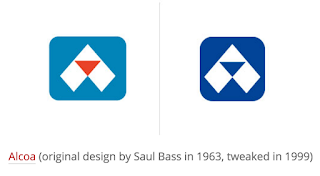So after looking at more luxurious brands of chocolate I started on redesigning the Moser Roth brand. This first design was based on the design choices of the original packaging such as the colours used and wording. I feel like the white and blue clashes too much. The white background feels too empty and with black text on top it doesn’t look anything special and it doesn’t look luxurious which is my aim. I chose a serif font, again, to make it seem more sophisticated. The original packaging uses a mixture of Sans serif and serif so I wanted to limit it to one or the other.
Based off the designs that I have researched I thought that I should try doing a design which was mostly black. I feel like the contrast of black and white is stronger, making the empty space seem less empty some how. I also added a touch of a ‘gold’ colour. I don’t want to use any fancy techniques within this design as I am keeping the target market in mind - if I make it look too luxurious people who shop at Aldi wouldn’t buy it as they would think that it is now out of their price range. So I wanted to make the design look sophisticated yet not too expensive.
After reviewing my previous design I felt as if the typeface was a bit too traditional looking and not contemporary enough for today’s market. So I found this contemporary yet still serif font to lift the design to look more modern. I also feel that this suits the origins of the brand as it has a slightly powerful German feeling to it. Yet I feel that this design is still lacking something.
Like in the Axococo design I added an accent of colour that works like a label over the black. I used a cream to represent the heritage of the brand as it was founded just under 200 years ago. I also added a small description onto the front to tempt people into buying the chocolate.
I took the mountain landscape from the original design which I think is based off the Stuttgart mountains near where the chocolate originates from. I do prefer the design with the illustration there but I feel that this illustration doesn’t suit this design. Maybe I could include illustrations that are relevant to the flavour of the chocolate (e.g. dark, milk etc.)
For the final designs I changed the illustration to something relevant to the flavour - so for milk it is a jug of milk and for dark it is cocoa beans. I feel this works a lot better as it draws your eye down the label rather than across it. I also added the nutritional values per serving onto the front like on the original packaging to make it look like the real packaging.
Additionally I put together the design of the back, keeping in mind that the design before was very cluttered I wanted to limit the information as much as possible and just keep the essential parts. I feel that the front and the back tie together nicely as they use the same label effect and elements of the gold. I personally much prefer this back design to the original. I could have utilised the rest of the black space at the bottom of the packaging but I feel that this works better as it corresponds with the front design.
I also created a new wrap for the chocolates (as Moser Roth comes as 5 individually wrapped pieces). Once again taking elements from the design of the front I wanted to use the cream band with a black outer. I didn’t want to overcomplicate the wrapping as it will be thrown away so I just used the logo and nothing else. Any more information would have been unnecessary.

























